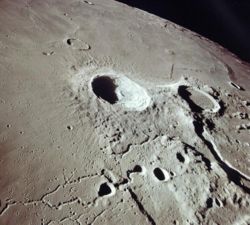Overview


ISOCHRON would address fundamental questions about the composition of the lunar crust and the time-stratigraphy of lunar volcanic processes, with implications for all of the terrestrial planets. [2] There is a stretch of nearly 2 billion years of lunar history that planetary scientists have not been able to date because the Apollo missions did not retrieve any young rocks. [1] Lunar mare basalts formed through partial melting of the mantle, thus serve as probes of the structure and composition of the interior. [2] The stated scientific objective of the mission is: "[To] make high-precision radiometric age measurements on these relatively young basalts to fill the existing gap in age-correlated crater size-frequency distributions (CSFDs), thereby greatly improving this widely-used tool for estimating the ages of exposed surfaces on rocky bodies." [2]
The proposed ISOCHRON mission concept would have a robotic lander land just south of Aristarchus plateau and retrieve about 150 g (5.3 oz) of a basalt sample estimated to be 1.5 to 2.0 billion years old. [2] The sample would be placed in a small container, launched to Earth, and it would be curated at NASA's Lunar Sample Laboratory Facility.
The Principal Investigator is Dave Draper, at NASA's Johnson Space Center in Texas. [1]

